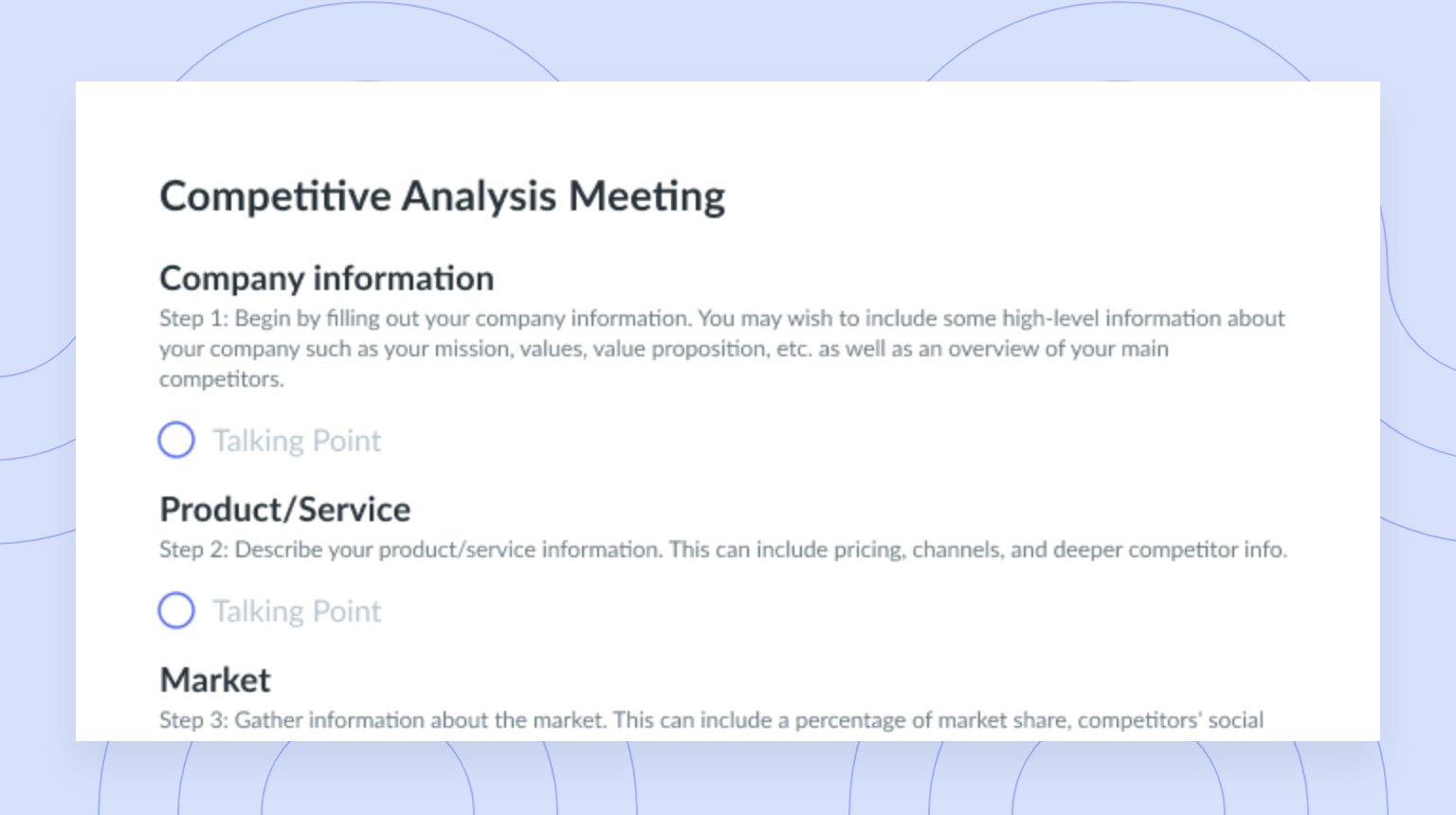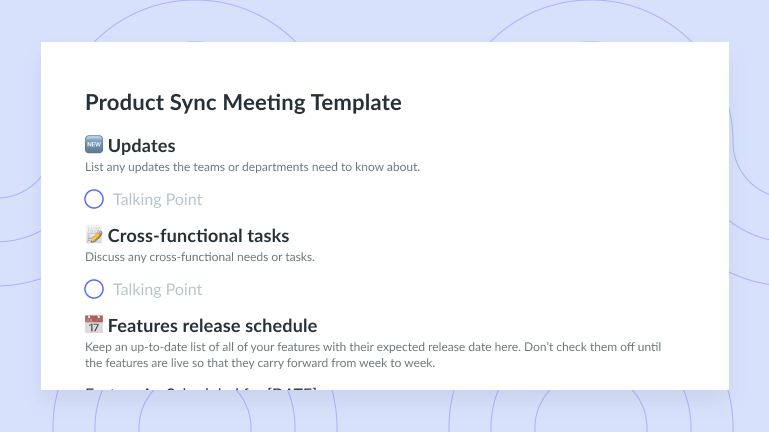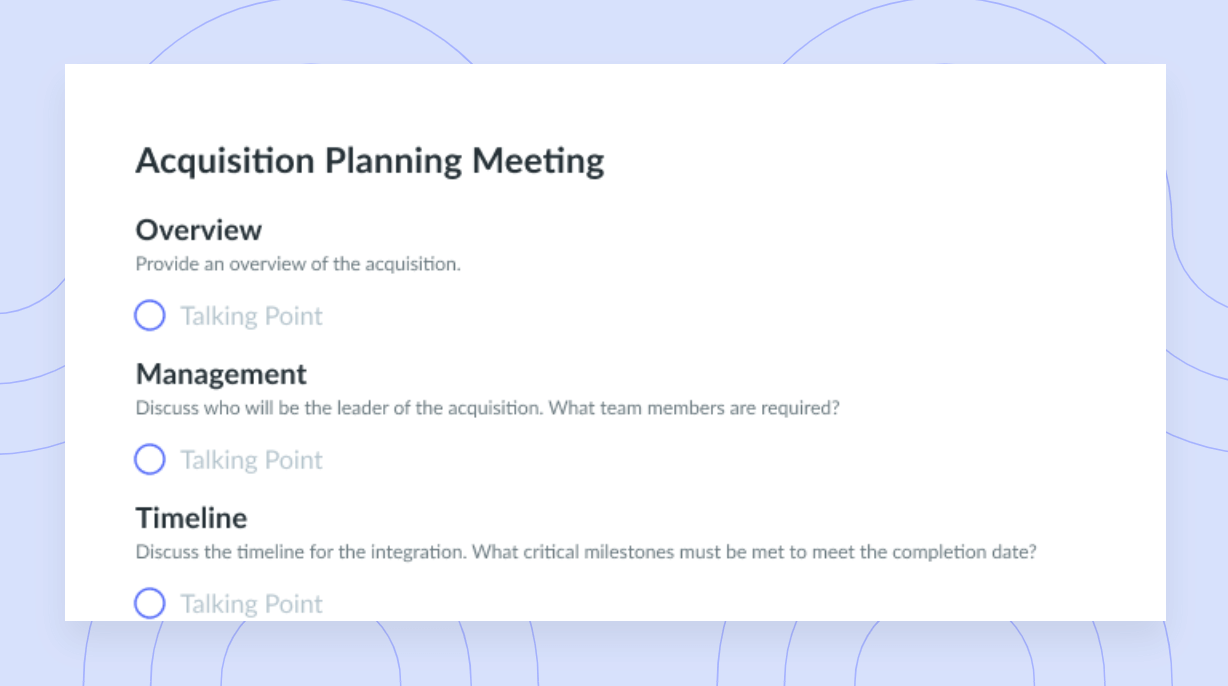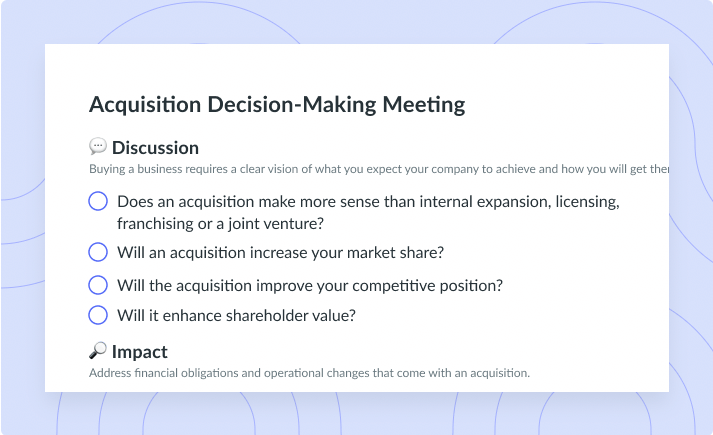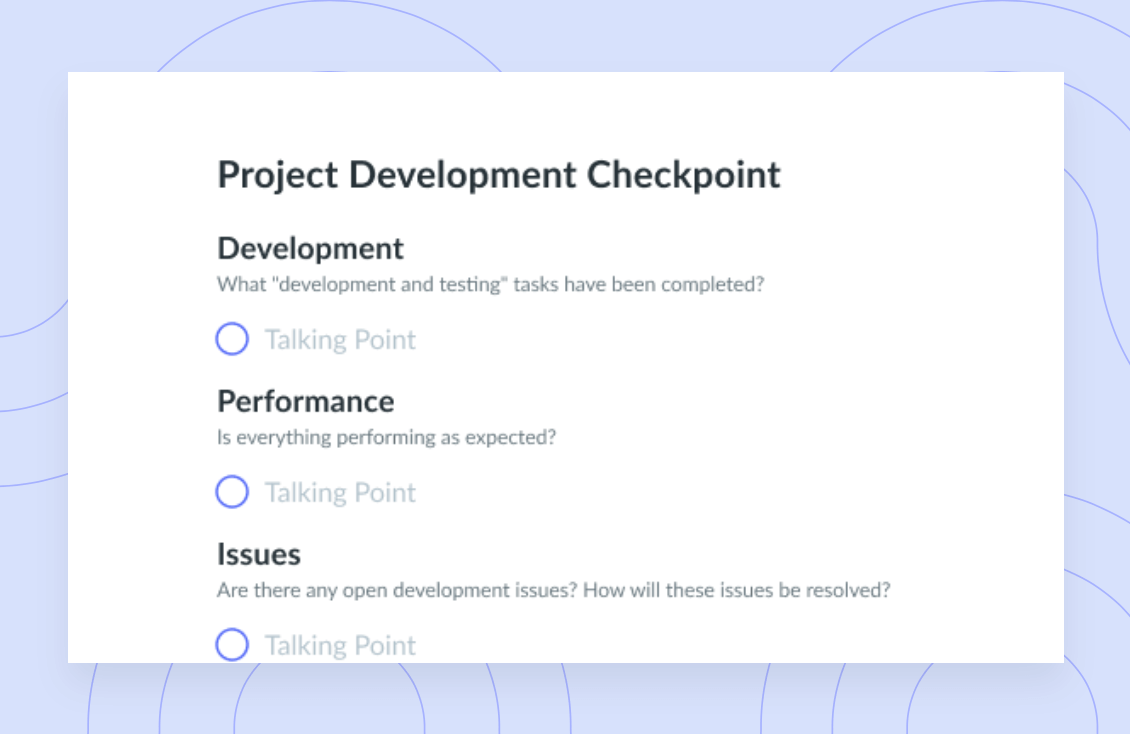ERP Implementation: Everything You Need to Know
In this article, you’ll learn all about ERP implementation and the benefits it can bring to your organization.
- What is ERP implementation?
- What are the 7 stages of an ERP implementation?
- 3 Key approaches to ERP implementation
- Why is ERP implementation important?
What is ERP implementation?
Enterprise resource planning (ERP) is a software platform that organizations use to manage and automate their most important processes. ERP implementation involves planning, training, testing, and launching an ERP. The idea here is to pinpoint your organization’s most important information and systems, find the best software, and fold that ERP system into your organization.

Build a culture of effective meetings with your engineering team
Level up your engineering meeting habits to boost engagement and productivity with a collaborative meeting agenda. Try a tool like Fellow!

What are the 7 stages of an ERP implementation?
There are several key stages in an ERP implementation. Below are these stages and the roles they play.
1Discover
Project managers, cross-functional teams, and your tech team will make up the discovery group. In this first stage of ERP implementation, these groups will review your organization’s current systems. They’ll then create reports about any issues your organization is facing and what they want an ERP system to solve.
2Analyze
The implementation team will next analyze the discovery info to figure out how to approach the ERP implementation process. In this stage, you can assess the benefits, potential challenges, and costs that could come with ERP implementation. Management and leadership will set goals for the entire ERP implementation project.
3Plan
To plan your ERP implementation, you’ll come up with a budget and a realistic timeline. You’ll also teach each team member the roles they’ll play and the key tasks they’ll need to complete for a successful implementation. You’ll also set a schedule and state which resources will come into play.
4Build
Once the team knows their roles and what they’re working toward, they can start the building phase. Here, your developers will customize your ERP software to meet your requirements. They’ll also take notes about how they’re implementing the ERP software. This way, future managers and teams know exactly how the system fits into the organization’s plans and how they can tweak it in the future.
5Stabilize
In this stage, your technical team checks for bugs and other issues to make sure everything is running smoothly before launch. Your developers will also make sure your teams know how to use your ERP software. They’ll also create training programs to give everyone the information they need, including people who join the organization later.
6Go live
Once the ERP system is ready to launch, your project team can go for it. They should also keep themselves available to answer questions and guide team members as they start making the software part of their everyday work. You should be prepared to jump in and work on any issues that might come up when the system goes live.
7Evaluate
Once the software is up and running, you and your developers should stay on alert in case there are any last-minute issues. You should also regularly evaluate your ERP software to make sure it’s serving your teams and clients the right way.
3 Key approaches to ERP implementation
There are few approaches you can take to implement a new ERP system. Below are some of the most common ones.
1Big bang approach
With this approach, the organization’s old software goes out the window, and the new one immediately comes into play. This takes less time, and that, in turn, keeps ERP deployment costs low. You can also save time with one large training session to get everyone up to speed on your new ERP solution.
However, this approach can throw everything off course – it’s a pretty big switch to make so quickly. You’re entirely saying goodbye to your old software, so you really need to make sure the new software is fully ready to go. You’ll also need to spend more time planning the launch to make sure you’re fully prepared for such a sudden shift.
2Phased approach
In a phased approach, you’ll roll out the system in parts. This approach typically has fewer risks involved than the big bang approach since you can catch issues and address them before the next phase. You’ll also give your team room to gradually get used to the new system.
On the other hand, ERP implementation in phases makes for a longer trek. You might also encounter data syncing errors between your previous ERP system and the new one. Team members and clients will also have to get used to the frequent changes that are part of a phased approach.
3Parallel approach
During a parallel launch, the new ERP system runs alongside the old one. This way, your team can make sure the new system is up to par before moving the entire organization to it. For this reason, the parallel approach is great for your most important processes. A parallel launch also allows you and your clients to learn the new system while still leaning on the old one for daily tasks.
Though parallel implementation isn’t as fast as the big bang approach, it takes less time than the phased approach. However, a parallel launch can be the most costly and complex of them all – you’re running two systems at once. This can introduce data issues too – team members need to record data in both the old and new systems.
Why is ERP implementation important?
ERP implementation is important for the below reasons.
- Collaboration among teams and departments
- Improved employee performance
- Better resource management
- Thorough system analytics
- Increased revenue
1Collaboration among teams and departments
If you use a bunch of different data systems across your departments, you might accidentally duplicate information. A team member might enter inaccurate data, or data might not sync properly, causing errors across your systems. With ERP implementation, everything gets centralized, so you can more easily build team collaboration and master cross-functional collaboration.
2Improved employee performance
Without a seamless system in place, your team members might need to do administrative work to keep your data accurate and synced. With ERP systems, your team can instead focus on their main roles. They can work more efficiently, and their morale can stay high since they aren’t spending time and energy on tedious tasks.
3Better resource management
You might be interested in ERP implementation to manage many types of resources, ensure accurate and efficient data migration – the list goes on. With ERP software, you can track your resources through all your project life cycles so you know you’re making the best use of them.
4Thorough system analytics
ERP systems can often report on user actions – this is key – automatically. Without them, you’d spend weeks creating these reports. ERP software makes it that much easier to get real-time insights into your team and your processes.
5Increased revenue
ERP systems simplify your processes – it’s that simple. Your team members won’t need to know how to use as many software platforms, shortening their time in training. All this saved time gives your team more room to work on other tasks or connect with more clients. The result is more revenue for your organization – which you can then put into making things even easier.
Make ERP implementation easier with Fellow
If you’re thinking about getting an ERP platform, Fellow can help you simplify the ERP implementation process at every step of the way. Fellow comes with meeting tools to help you hold effective project check-ins, run innovative cross-functional meetings, and give and get peer feedback. With Fellow and an ERP system, your organization can look forward to smooth and successful projects each and every time.









